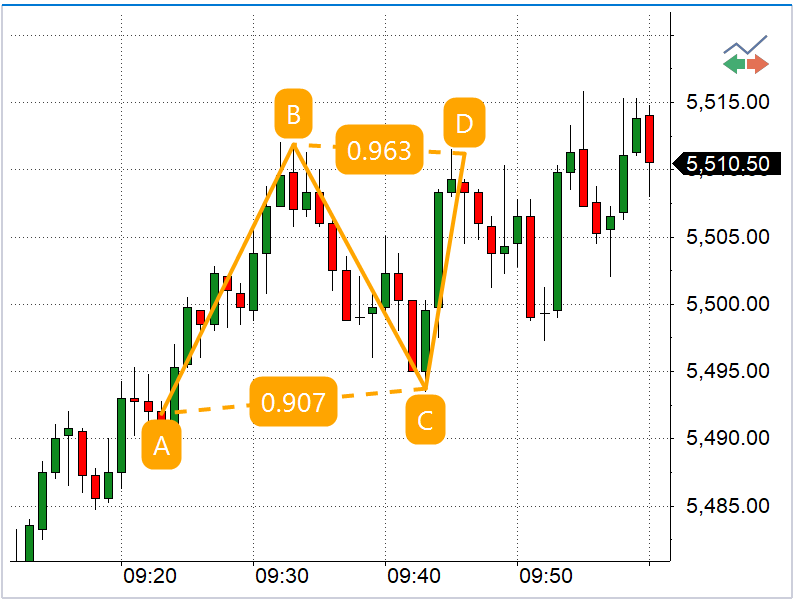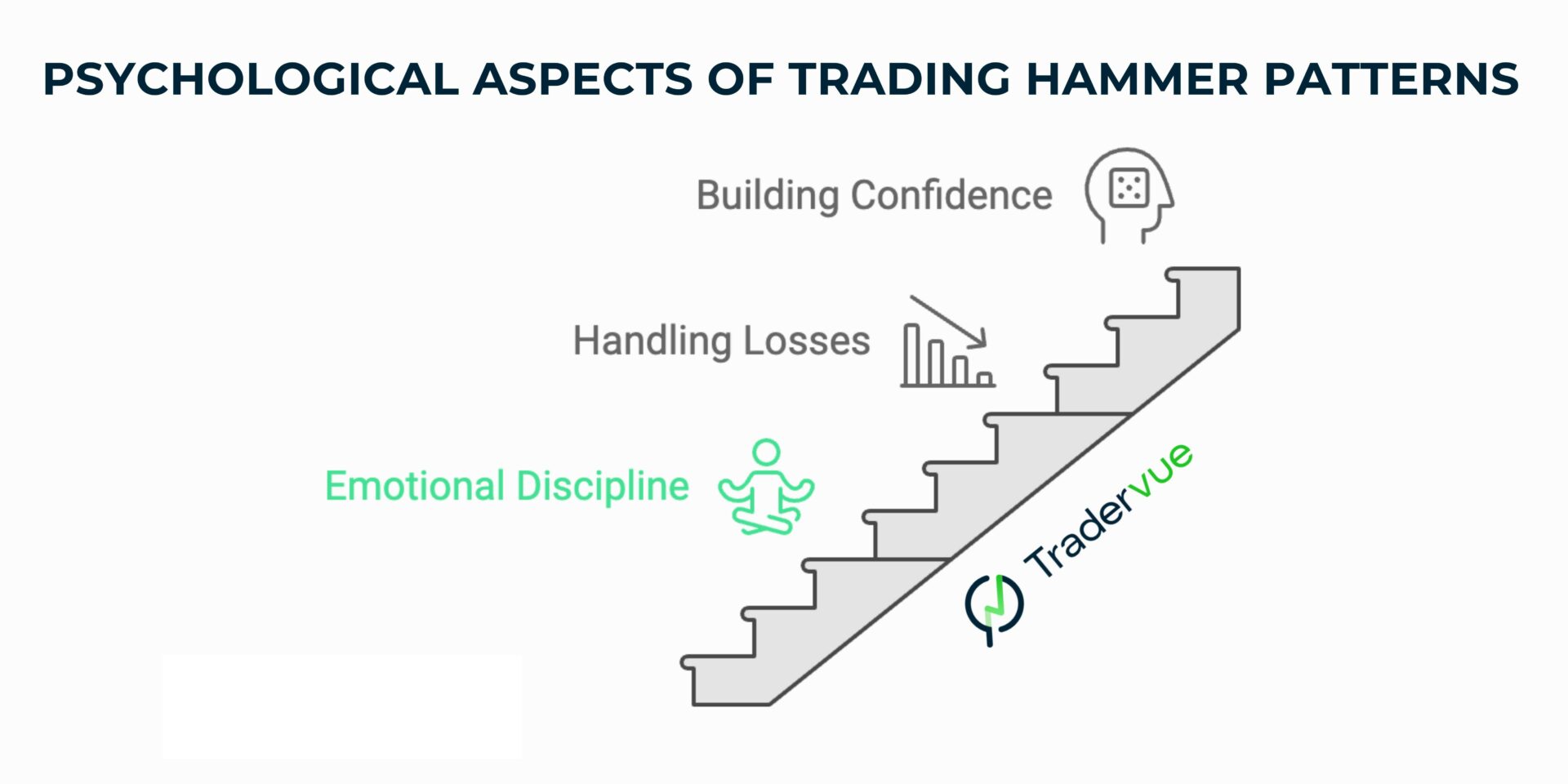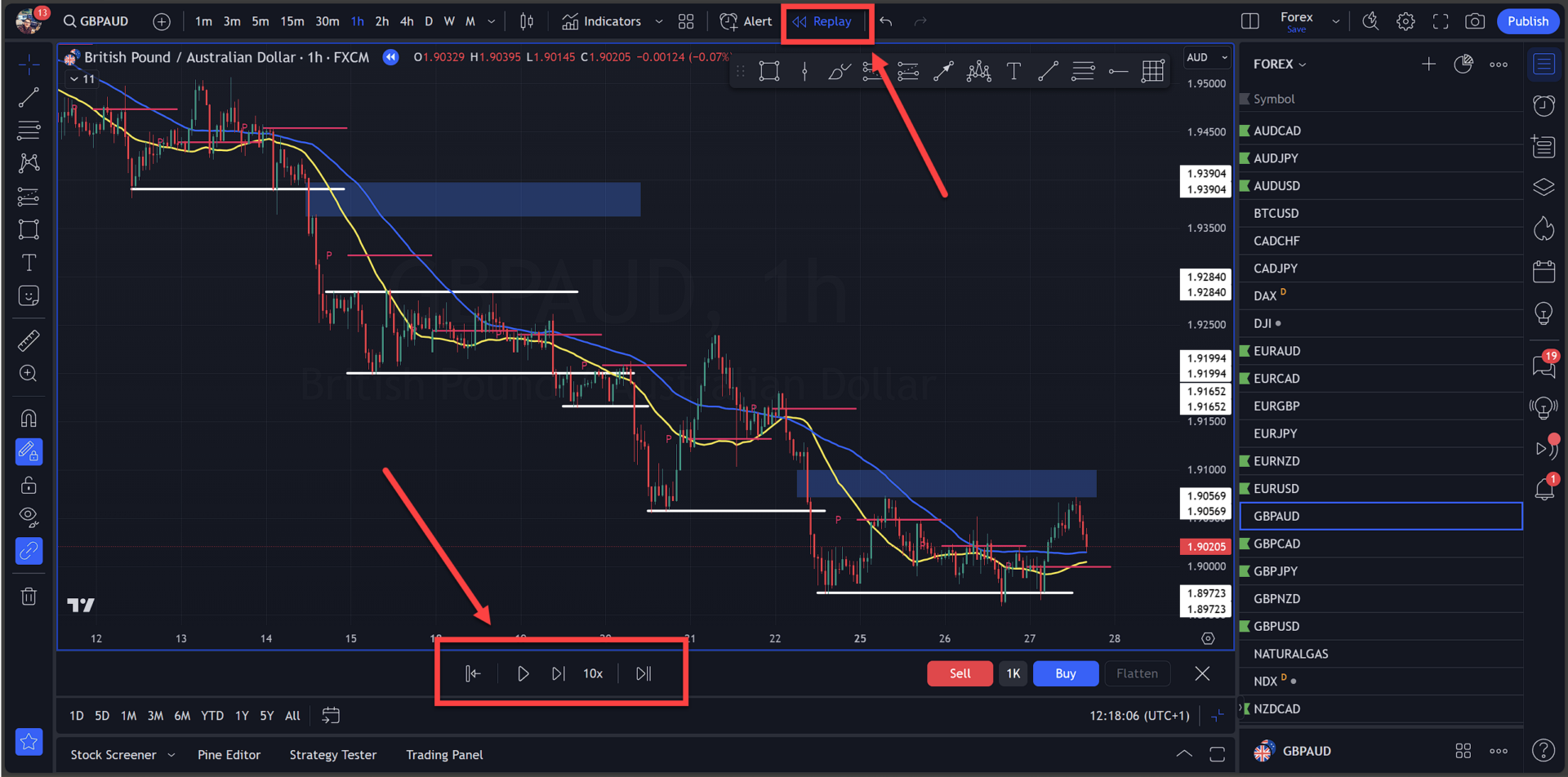Did you know that nearly 90% of day traders fail? But don't worry, if you build a solid trading plan around patterns, you can be among the successful few! This article delves into the essential components of a day trading plan centered on patterns, including how to identify and incorporate these patterns effectively. Discover the most common day trading patterns, the importance of risk management, and ways to develop a routine for spotting opportunities. Learn about the tools and software that can aid in pattern recognition, as well as strategies for backtesting your plan. We also explore the psychological aspects of trading and how to adapt your strategy to different market conditions. With insights from DayTradingBusiness, you'll be equipped to navigate the world of day trading with confidence.
What are the key elements of a day trading plan focused on patterns?
A day trading plan focused on patterns should include these key elements:
1. Pattern Identification: Define specific patterns you will trade, such as flags, triangles, or head and shoulders.
2. Entry Criteria: Set clear rules for when to enter a trade based on pattern confirmation, like breakout points or volume spikes.
3. Exit Strategy: profit targets and stop-loss levels to manage risk and protect gains.
4. Risk Management: Determine how much capital to risk on each trade, typically no more than 1-2% of your trading account.
5. Timeframe Selection: Choose the timeframes you will focus on, such as 1-minute, 5-minute, or 15-minute charts.
6. Review Process: Establish a routine for analyzing past trades to refine your strategy and improve your pattern recognition skills.
7. Trading Journal: Keep detailed records of trades, including patterns identified, entry and exit points, and outcomes for continuous learning.
By incorporating these elements, you can create a robust day trading plan centered on patterns.
How can I identify trading patterns effectively?
To identify trading patterns effectively, start by studying common patterns like head and shoulders, flags, and triangles. Use charting tools to visualize these patterns on multiple time frames. Combine pattern recognition with volume analysis; rising volume often confirms a pattern's validity. Keep a trading journal to track patterns you observe and their outcomes. Utilize technical indicators like moving averages or RSI to support your pattern analysis. Stay disciplined and stick to your trading plan to manage risks. Regularly review and refine your approach based on your experiences.
What are the most common day trading patterns to watch for?
The most common day trading patterns to watch for include:
1. Bullish and Bearish Flags: Indicate continuation of the trend. Look for a sharp price movement followed by a consolidation period.
2. Head and Shoulders: Signals a trend reversal. A "head" peak between two smaller "shoulders" suggests a potential price drop.
3. Cup and Handle: A bullish pattern where a rounded bottom is followed by a consolidation phase, indicating a breakout opportunity.
4. Double Tops and Bottoms: Indicate reversals. A double top signals a potential decline, while a double bottom suggests a price increase.
5. Triangles: Ascending, descending, and symmetrical triangles indicate potential breakouts based on the direction of the trend.
These patterns can help structure your day trading plan for identifying entry and exit points effectively.
How do I incorporate candlestick patterns into my trading strategy?
To incorporate candlestick patterns into your trading strategy, start by identifying key patterns like doji, engulfing, and hammer. Use these patterns to determine potential market reversals or continuations.
1. Select Patterns: Focus on a few reliable patterns that suit your trading style. For example, look for bullish engulfing patterns to signal a buy.
2. Set Up Charts: Use candlestick charts with a time frame that aligns with your day trading strategy, like 5-minute or 15-minute charts.
3. Confirm with Indicators: Use indicators like moving averages or RSI to confirm signals from candlestick patterns.
4. Define Entry and Exit Points: Establish clear entry points based on the pattern and set stop-loss levels to manage risk.
5. Backtest Your Strategy: Review historical data to see how well your chosen patterns performed in past trades.
6. Stay Disciplined: Stick to your plan and avoid emotional trading based on patterns alone.
By consistently applying these steps, you can effectively integrate candlestick patterns into your day trading plan.
What role does risk management play in a pattern-based trading plan?
Risk management is crucial in a pattern-based trading plan as it protects your capital and ensures long-term success. It involves setting stop-loss orders to limit potential losses on each trade, determining position sizes based on your risk tolerance, and diversifying trades to avoid overexposure to any single pattern. By managing risk, you can stay disciplined, reduce emotional decision-making, and maintain a sustainable trading strategy focused on patterns.
How can I develop a routine for spotting trading patterns?
To develop a routine for spotting trading patterns, start by defining your trading goals and timeframes. Choose specific patterns to focus on, like head and shoulders or double tops. Allocate time daily to study charts and track patterns using tools like trendlines and moving averages.
Incorporate real-time market analysis during trading hours. Keep a journal to record patterns you identify and their outcomes. Review your performance weekly to refine your strategy. Consistency is key, so stick to your routine and adjust as needed based on results.
What tools and software can help identify trading patterns?

To identify trading patterns, consider using these tools and software:
1. TradingView: Offers advanced charting tools and a wide range of indicators to spot patterns like head and shoulders or flags.
2. MetaTrader 4/5: Popular platforms with customizable technical indicators and pattern recognition features.
3. Thinkorswim: Provides robust charting capabilities and pattern recognition tools for day traders.
4. NinjaTrader: Includes advanced analytics and automated trading features to help identify trading patterns.
5. StockCharts: Useful for analyzing price movements and spotting patterns over different time frames.
6. Trade Ideas: AI-driven software that scans for patterns and alerts traders in real time.
These tools can enhance your ability to build a day trading plan focused on recognizing profitable patterns.
How do I test my trading plan based on patterns before going live?
To test your trading plan based on patterns before going live, follow these steps:
1. Backtest: Use historical data to simulate trades based on your patterns. Record entry and exit points, stop-losses, and take-profits.
2. Paper Trade: Execute your trading plan in real-time using a demo account. This allows you to practice without financial risk while observing how your patterns perform in current market conditions.
3. Set Clear Criteria: Define specific criteria for each pattern you plan to trade. This includes entry signals, risk management rules, and exit strategies.
4. Analyze Results: After backtesting and paper trading, review your results. Look for win rates, drawdowns, and overall profitability. Adjust your plan based on what works and what doesn’t.
5. Refine Your Strategy: Continuously refine your approach based on your findings. Focus on improving patterns that yield the best results.
By following these steps, you can effectively test your trading plan centered around patterns before committing real capital.
What are the psychological aspects of trading with patterns?

The psychological aspects of trading with patterns include discipline, emotional control, and cognitive biases. Traders must stick to their plan and avoid impulsive decisions driven by fear or greed. Recognizing patterns can lead to overconfidence, making traders prone to confirmation bias, where they only seek information that supports their views. Patience is key; traders must wait for confirmations rather than chase moves. Additionally, managing stress and maintaining a clear mindset help in executing trades effectively based on patterns. Understanding these psychological factors can enhance decision-making and improve trading outcomes.
How can I adapt my trading plan for different market conditions?
To adapt your day trading plan for different market conditions, first, identify the current market type: trending, ranging, or volatile.
For trending markets, focus on momentum strategies, buying on pullbacks or dips. In ranging markets, prioritize mean-reversion strategies, selling at resistance and buying at support levels. During volatile conditions, use wider stop losses and smaller position sizes to manage risk.
Regularly review and adjust your entry and exit triggers based on market patterns. Incorporate technical indicators that suit the current environment, like moving averages for trends or Bollinger Bands for ranges. Finally, maintain flexibility in your plan to quickly adapt to sudden market changes.
Learn about How to Adapt Day Trading Patterns to Different Markets
What are the best timeframes for trading patterns in day trading?
The best timeframes for trading patterns in day trading are typically 1-minute, 5-minute, and 15-minute charts. The 1-minute chart is great for quick trades, capturing immediate price movements. The 5-minute chart balances speed and clarity, allowing for slightly longer trades while still being responsive. The 15-minute chart offers a broader view, ideal for spotting trends and patterns over a longer duration. Using these timeframes helps identify entry and exit points effectively.
Learn about Best Resources for Learning Day Trading Patterns
How do I manage my emotions when trading patterns?
To manage your emotions when trading patterns, establish a clear trading plan with defined entry and exit points. Stick to your strategy without deviation, regardless of emotional impulses. Implement risk management techniques, like setting stop-loss orders, to protect your capital and reduce anxiety. Regularly review your trades to learn from both successes and mistakes, which helps build confidence. Practice mindfulness or breathing techniques to stay calm during volatile moments. Lastly, avoid overtrading; set daily limits to maintain emotional balance and focus.
Learn about How to Manage Emotions During Day Trading Scalping
What should I do if my pattern-based strategy isn't working?
If your pattern-based strategy isn't working, first analyze your trades to identify consistent mistakes. Adjust your entry and exit points based on recent market conditions. Consider refining your pattern recognition by studying more recent price action. Test your strategy with a demo account before real trades. Finally, stay adaptable; if a pattern isn’t yielding results, it might be time to explore different strategies or patterns that align better with current market trends.
How can I use backtesting to improve my pattern trading plan?

To use backtesting for improving your pattern trading plan, follow these steps:
1. Select Patterns: Identify the specific trading patterns you want to test, like head and shoulders or flags.
2. Gather Historical Data: Collect price data for the assets you trade, ensuring it covers different market conditions.
3. Define Rules: Set clear entry, exit, and risk management rules based on your patterns.
4. Run Backtests: Use backtesting software to simulate trades based on historical data, applying your defined rules.
5. Analyze Results: Evaluate the performance metrics, such as win rate, average profit, and drawdown, to see how effective your patterns are.
6. Refine Your Plan: Adjust your trading strategy based on the insights gained, optimizing entry/exit points and risk management.
7. Ongoing Testing: Continuously backtest as you tweak your plan to ensure it adapts to changing market conditions.
This process will help you validate and enhance your pattern trading strategy effectively.
Learn about How to Use Backtesting to Improve Your Day Trading Performance
What are the advantages of using technical analysis for pattern trading?
Using technical analysis for pattern trading offers several advantages:
1. Identifying Trends: It helps traders spot market trends and reversals, allowing for timely entry and exit points.
2. Predictive Power: Patterns like head and shoulders or flags can indicate future price movements, enhancing decision-making.
3. Risk Management: Technical analysis provides clear levels for stop-loss orders, helping to limit potential losses.
4. Objective Signals: It offers quantifiable data, reducing emotional bias in trading decisions.
5. Market Psychology Insight: Patterns reflect market sentiment, giving traders an edge in understanding buyer and seller behaviors.
6. Backtesting: Traders can backtest patterns to validate strategies, boosting confidence in their trading plan.
Utilizing these advantages can improve the effectiveness of a day trading plan centered around patterns.
How do news events impact trading patterns and my plan?
News events significantly impact trading patterns by causing volatility and influencing market sentiment. For day trading, incorporate a news calendar into your plan. Monitor earnings reports, economic data releases, and geopolitical events. These can create opportunities for quick gains or increased risk. Adjust your entry and exit points based on news sentiment. If a major event is expected, consider trading smaller positions or setting tighter stop-loss orders to manage risk effectively. Always stay informed and adapt your strategy accordingly.
Learn about How News Events Impact Day Trading Decisions
Conclusion about Building a Day Trading Plan Around Patterns
In conclusion, building a successful day trading plan centered on patterns requires a comprehensive understanding of key elements such as effective identification methods, risk management, and emotional discipline. By incorporating technical analysis and utilizing tools for pattern recognition, traders can enhance their strategies and adapt to varying market conditions. Regular backtesting and routine development are essential for refining your approach, ensuring that your trading plan remains robust even in the face of market fluctuations. For in-depth guidance and support in mastering these aspects, DayTradingBusiness is here to assist you every step of the way.
Learn about How to Plan Your Day Trading Strategy Around the PDT Rule?